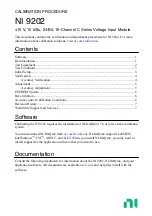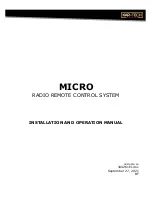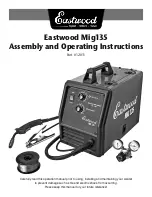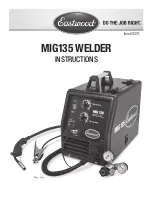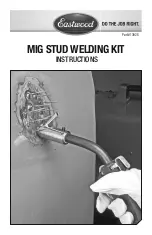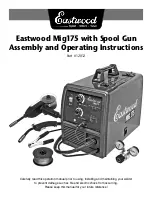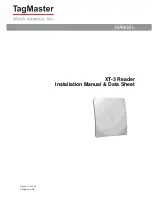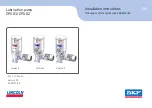
Catalog
Capacity
Lift
Number
Tons (Kg)
Ft (M)
Table 1 - Specifications
9682-20
3/4 (750)
5 (1.5)
9691-20
3 (3,000)
20 (6.1)
9689-20
3 (3,000)
5 (1.5)
9686-20
1½ (1,500)
10 (3.0)
9687-20
1½ (1,500)
20 (6.1)
9688-20
1½ (1,500)
25 (7.6)
9685-20
1½ (1,500)
5 (1.5)
9684-20
3/4 (750)
20 (6.1)
9683-20
3/4 (750)
10 (3.0)
9690-20
3 (3,000)
10 (3.0)
Each MILWAUKEE hand operated lever hoist is built in accordance with the specifications contained herein and at the time of
manufacturer complies with our interpretation of applicable sections of the American Society of Mechanical Engineers (ASME)
Code B30.21 “Manually Lever Operated Hoists” and the Occupation Safety and Health Act (OSHA). Copies of this standard
can be obtained from ASME Order Department, 22 Law Drive, PO Box 2300, Fairfield, NJ 07007-2300, USA.
The safety laws for elevators and for dumbwaiters may specify construction details that are not necessarily incorporated in this
hoist. We recommend the use of equipment that meets state and national safety codes. Milwaukee Electric Tool Corporation
cannot be responsible for applications other than those for which MILWAUKEE equipment is recommended.
1. Read ASME B30.21 safety standard for “Manually Lever Operated Hoists” and this manual thoroughly.
2. Do not permit more than one operator to operate lever hoist at one time.
1. Upper Hook
2. Hoist Frame
3. Free Chaining Knob
4. Load Chain
5. Directional Lever
6. Lever
7. End Ring
8. Lower Hook
9. Hook Tip
10. Hook Latch
1
2
8
4
10
9
7
6
5
3
SPECIFIC SAFETY RULES - LEVER HOIST
FUNCTIONAL DESCRIPTION



















